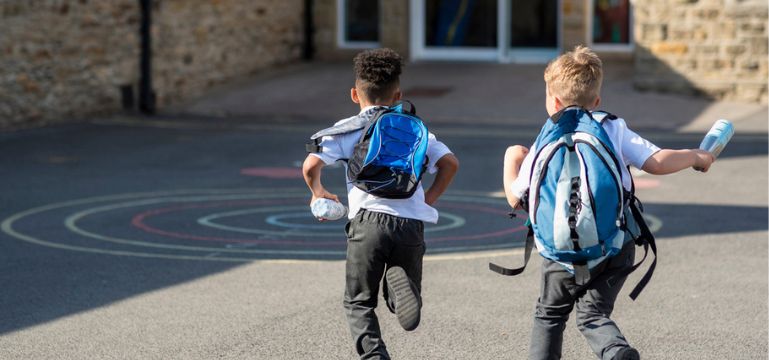How the school has developed an effective, responsive approach to teaching and learning

Quick links:
Information about the school
Grangetown Nursery School was established shortly after the Second World War. The current building was completed in the late 1980’s and extended in 2011. The school offers part-time places for 160 children between the ages of 3 and 4, 80 in the morning and 80 in the afternoon.
The school is well maintained, well resourced and in good condition with open-plan, carefully considered learning environments, both indoors and outdoors. The underlying aim of the school is to provide a happy, caring, secure environment in which the youngest members of the community thrive and develop intellectually, emotionally, physically, spiritually and morally.
The school celebrates the diversity of the community, carefully considering and respecting the variety of cultures, backgrounds, individual needs and gender. It ensures that the environment reflects the multi-lingual nature of Grangetown. All children are given opportunities to access learning taking into account their individual stage of development. The school views parents and carers as the first and most important educators of their children. It aims to develop positive working relationships with families, taking into account their needs, as they support each child in their first steps beyond the home. The school has developed an integrated approach, making links with the wider community, forging genuine relationships with other professionals and outside agencies. The school works closely with neighbouring schools in order to make the transition from nursery to primary a happy and positive experience. The school provides a safe and secure environment that’s exciting and stimulating. Grangetown Nursery School is a place where children flourish and become genuinely engaged in their learning, resulting in happy, independent, confident, individual learners.
Context and background to the effective or innovative practice
Provision at the school has always been delivered in a holistic way, therefore the implementation of Curriculum for Wales was something the school celebrated. Staff target learning at the starting point of the child and address their individual developmental needs. They see children as having an innate curiosity and as innovative learners. They aim to hone in on the children’s fascinations to ensure that learning experiences are relevant and authentic. Curriculum for Wales supported their provision and elevated it further.
Description of nature of strategy or activity
Responsive teaching and learning is embedded within the school and is at the core of the curriculum. Tuning in to learners and the role of the enabling adult is imperative within the bespoke curriculum. The schools values are intrinsic and represented within every interaction and learning experience on offer. The school’s collaborations with outside agencies and their key influences, such as Reggio, Froebel and Ferre Leavers, have been integral to the school’s development. Their planning is reflective of the community and the children they teach. It encompasses the whole child and takes account of prior experiences and their individual stage of development. The curriculum has core elements and key experiences, such as authentic food literacy, real life seed to plate, with our Big Bocs Bwyd and community allotment. Children have the opportunity to revisit, recall and embed their skills. All delivered through effective and carefully planned provision indoors and outdoors with practitioners being responsive to the observations and actions of learners. Daily professional dialogues and reflections ensure that the provision is meaningful, authentic and progressive. Enhancing learning through responsive teaching, ensures high levels of engagement and involvement, sustained shared thinking and an organic flow of teaching and learning.
What impact has this work had on provision and learners’ standards?
The impact has been instrumental on the developmental needs of learners. The curriculum offer is tailored to the cohort of children, differing provision even from morning to afternoon. Relationships with children and parents are a strength of the school and the impact of these relationships alongside the curriculum is palpable.
How have you shared your good practice?
The school has shared their practice through the local cluster of schools and professional learning community work, as well as by welcoming visitors to the school.